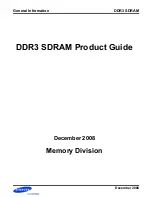
1-1
1
Multicast Routing and Forwarding Configuration
When configuring multicast routing and forwarding, go to these sections for information you are
interested in:
z
Multicast Routing and Forwarding Overview
z
Configuration Task List
z
Displaying and Maintaining Multicast Routing and Forwarding
z
Configuration Examples
z
Troubleshooting Multicast Routing and Forwarding
z
The term "router" in this document refers to a router in a generic sense or a Layer 3 switch running
an IP routing protocol.
z
The S7900E Series Ethernet Switches are distributed devices that support Intelligent Resilient
Framework (IRF). Two S7900E series can be connected together to form a distributed IRF device.
If an S7900E series is not in any IRF, it operates as a distributed device; if the S7900E series is in
an IRF, it operates as a distributed IRF device. For introduction of IRF, refer to
IRF Configuration
in
the
System Volume.
Multicast Routing and Forwarding Overview
Introduction to Multicast Routing and Forwarding
In multicast implementations, multicast routing and forwarding are implemented by three types of
tables:
z
Each multicast routing protocol has its own multicast routing table, such as PIM routing table.
z
The information of different multicast routing protocols forms a general multicast routing table.
z
The multicast forwarding table is directly used to control the forwarding of multicast packets.
A multicast forwarding table consists of a set of (S, G) entries, each indicating the routing information for
delivering multicast data from a multicast source to a multicast group. If a router supports multiple
multicast protocols, its multicast routing table will include routes generated by multiple protocols. The
router chooses the optimal route from the multicast routing table based on the configured multicast
routing and forwarding policy and adds the route entry into its multicast forwarding table.
RPF Check Mechanism
A multicast routing protocol relies on the existing unicast routing information, MBGP routes, or multicast
static routes in creating multicast routing entries. When creating multicast routing table entries, a
multicast routing protocol uses the reverse path forwarding (RPF) check mechanism to ensure
Summary of Contents for S7902E
Page 82: ...1 4 DeviceA interface tunnel 1 DeviceA Tunnel1 service loopback group 1 ...
Page 200: ...1 11 DeviceB display vlan dynamic No dynamic vlans exist ...
Page 598: ...ii ...
Page 1757: ...4 9 ...
Page 1770: ...6 4 ...
Page 2017: ...2 11 Figure 2 3 SFTP client interface ...
Page 2238: ...1 16 DeviceA cfd linktrace service instance 1 mep 1001 target mep 4002 ...















































